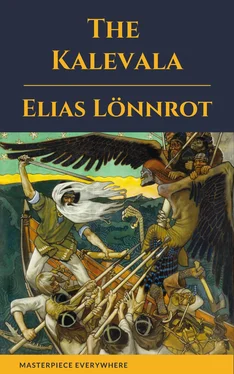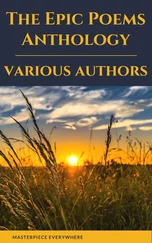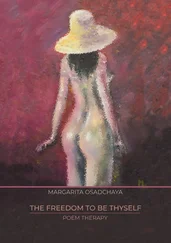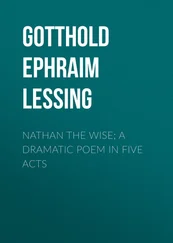Steinthal recognizes but four great national epics, viz., the Iliad , Kalevala , Nibelunge and the Roland Songs .
The Kalevala describes Finnish nature very minutely and very beautifully. Grimm says that no poem is to be compared with it in this respect, unless it be some of the epics of India. It has been translated into several European languages; into Swedish by Alex. Castrén, in 1844; into French prose by L. LeDuc, in 1845; into German by Anton Schiefuer, in 1852; into Hungarian by Ferdinand Barna, in 1871; and a very small portion of it—the legend of Aino—into English, in 1868, by the late Prof. John A. Porter, of Yale College. It must remain a matter of universal regret to the English-speaking people that Prof. Porter's life could not have been spared to finish the great work he had so beautifully begun.
Some of the most convincing evidences of the genuineness and great age of the Kalevala have been supplied by the Hungarian translator. The Hungarians, as is well known, are closely related to the Finns, and their language, the Magyar dialect, has the same characteristic features as the Finnish tongue. Barna's translation, accordingly, is the best rendering of the original. In order to show the genuineness and antiquity of the Kalevala , Barna adduces a Hungarian book written by a certain Peter Bornemissza, in 1578, entitled Ördögi Kisertetekröl (on Satanic Specters), the unique copy of which he found in the library of the University of Budapest. In this book Bornemissza collected all the incantations (ráolvasások) in use among Hungarian country-people of his day for the expulsion of diseases and misfortunes. These incantations, forming the common stock of all Ugrian peoples, of which the Finns and Hungarians are branches, display a most satisfactory sameness with the numerous incantations of the Kalevala used for the same purpose. Barna published an elaborate treatise on this subject; it appeared in the, Transactions of the Hungarian Academy of Sciences, Philological Department, for 1870. Again, in 1868, twenty-two Hungarian deeds, dating from 1616-1660, were sent to the Hungarian Academy of Sciences, as having been found in the Hegyalja, where the celebrated wine of Tokay is made. These deeds contained several contracts for the sale of vineyards, and at the end of each deed the customary cup of wine was said to have been emptied by both parties to the contract. This cup of wine, in the deeds, was termed, "Ukkon's cup." Ukko, however, is the chief God according to Finnish mythology, and thus the coincidence of the Magyar Ukkon and the Finnish Ukko was placed beyond doubt.
The Kalevala (the Land of Heroes) relates the ever-varying contests between the Finns and the "darksome Laplanders ", just as the Iliad relates the contests between the Greeks and the Trojans. Castrén is of the opinion that the enmity between the Finns and the Lapps was sung long before the Finns had left their Asiatic birth-place.
A deeper and more esoteric meaning of the Kalevala , however, points to a contest between Light and Darkness, Good and Evil; the Finns representing the Light and the Good, and the Lapps, the Darkness and the Evil. Like the Niebelungs, the heroes of the Finns woo for brides the beauteous maidens of the North; and the similarity is rendered still more striking by their frequent inroads into the country of the Lapps, in order to possess themselves of the envied treasure of Lapland, the mysterious Sampo, evidently the Golden Fleece of the Argonautic expedition. Curiously enough public opinion is often expressed in the runes, in the words of an infant; often too the unexpected is introduced after the manner of the Greek dramas, by a young child, or an old man.
The whole poem is replete with the most fascinating folk-lore about the mysteries of nature, the origin of things, the enigmas of human tears, and, true to the character of a national epic, it represents not only the poetry, but the entire wisdom and accumulated experience of a nation. Among others, there is a profoundly philosophical trait in the poem, indicative of a deep insight into the workings of the human mind, and into the forces of nature. Whenever one of the heroes of the Kalevala wishes to overcome the aggressive power of an evil force, as a wound, a disease, a ferocious beast, or a venomous serpent, he achieves his purpose by chanting the origin of the inimical force. The thought underlying this idea evidently is that all evil could be obviated had we but the knowledge of whence and how it came.
The numerous myths of the poem are likewise full of significance and beauty, and the Kalevala should be read between the lines , in order that the fall meaning of this great epic may be comprehended. Even such a hideous impersonation as that of Kullerwoinen, is rich with pointed meaning, showing as it does, the incorrigibility of ingrained evil. This legend, like all others of the poem, has its deep-running stream of esoteric interpretation. The Kalevala , perhaps, more than any other, uses its lines on the surface in symbolism to point the human mind to the brighter gems of truth beneath.
The three main personages, Wainamoinen, the ancient singer, Ilmarinen, the eternal forgeman, and Lemminkainen, the reckless wizard, as mentioned above, are conceived as being of divine origin. In fact, the acting characters of the Kalevala are mostly superhuman, magic beings. Even the female actors are powerful sorceresses, and the hostess of Pohyola, especially, braves the might of all the enchanters of Wainola combined. The power of magic is a striking feature of the poem. Here, as in the legends of no other people, do the heroes and demi-gods accomplish nearly everything by magic. The songs of Wainamoinen disarm his opponents; they quiet the angry sea; they give warmth to the new sun and the new moon which his brother, Ilmarinen, forges from the magic metals; they give life to the spouse of Ilmarinen, which the "eternal metal-artist" forges from gold, silver, and copper. In fact we are among a people that endows everything with life, and with human and divine attributes. Birds, and beasts, and fishes, and serpents, as well as the Sun, the Moon, the Great Bear, and the stars, are either kind or unkind. Drops of blood find speech; men and maidens transform themselves into other shapes and resume again their native forms at will; ships, and trees, and waters, have magic powers; in short, all nature speaks in human tongues.
The Kalevala dates back to an enormous antiquity. One reason for believing this, lies in the silence of the Kalevala about Russians, Germans, or Swedes, their neighbors. This evidently shows that the poem must have been composed at a time when these nations had but very little or no intercourse with the Finns. The coincidence between the incantations adduced above, proves that these witch-songs date from a time when the Hungarians and the Finns were still united as one people; in other words, to a time at least 3000 years ago. The whole poem betrays no important signs of foreign influence, and in its entire tenor is a thoroughly pagan epic. There are excellent reasons for believing that the story of Mariatta, recited in the 50th Rune, is an ante-Christian legend.
An additional proof of the originality and independent rise of the Kalevala is to be found in its metre. All genuine poetry must have its peculiar verse, just as snow-flakes cannot exist without their peculiar crystalizations. It is thus that the Iliad is inseparably united, and, as it were, immersed in the stately hexametre, and the French epics, in the graceful Alexandrine verse. The metre of the Kalevala is the "eight-syllabled trochaic, with the part-line echo," and is the characteristic verse of the Finns. The natural speech of this people is poetry. The young men and maidens, the old men and matrons, in their interchange of ideas, unwittingly fall into verse. The genius of their language aids to this end, inasmuch as their words are strongly trochaic.
Читать дальше












